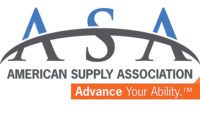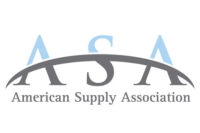It’s 1986, Mike Tyson becomes the youngest heavyweight champion in history, a woman named Oprah Winfrey debuts on national TV, the Rock and Roll Hall of Fame inducts its first members and we all felt that “Need for Speed” after seeing “Top Gun” in theaters. It also was the last time the House, Senate and White House agreed on major tax reform and passed a bill in to law.
Though it’s been nearly 32 years, we have been here before, but have never achieved the reforms made back then. In recent years, associations such as ASA have worked with the committees of jurisdiction as they’ve offered drafts of tax reform, only to fall apart. The House Ways and Means and Senate Finance committees have gone through several iterations of listening sessions, wanting to hear what small businesses and manufacturers wanted to see included (and excluded) from reform.
In fact, reforming our tax code for corporations, small businesses and individuals, preserving such things as the last-in, first-out (LIFO) method of accounting and ensuring Congress didn’t advance corporate tax reform without also passing reforms for pass-thru’s and small businesses, has been a top agenda item of ASA’s for years.
With the election of Donald Trump, and the Republicans surprisingly retaining control of the Senate, much was expected. Yet, to date, little has been delivered. A repeal of the Affordable Care Act had fallen apart, likely shelved permanently, which for a time, spelled doom and gloom that tax reform was destined to suffer the same fate.
Getting major pieces of legislation passed into law requires the active participation by the president and the White House, a delicate dance to say the least. Often, it also takes the careful navigation of the legislative process, which this closely divided Congress managed to achieve. Specifically, using a tool known as budget reconciliation.
According to the Tax Policy Center, reconciliation legislation is passed through an expedited process. First, Congress passes a budget resolution containing “reconciliation instructions” telling congressional committees how much they need to change their revenue and spending to conform to a new budget resolution. Reconciliation bills are subject to special rules in the Senate. If the bill is free of points of order, it can be passed in the Senate by a simple majority; the 60 votes necessary to shut off a filibuster are not required. This is crucial to passage.
The reconciliation process was how the Affordable Care Act was passed, and also attempted to be repealed, and hopefully how tax reform can pass. To be sure, reconciliation has its limits, but clearly just as many opportunities to reshape policy and avoid the oft-tenuous roadblock in the Senate filibuster.
As of this writing, all of official Washington was waiting to learn what would be in the draft bill coming out of the House. Article I, Section 7, of the Constitution states: all bills for raising Revenue shall originate in the House of Representatives; but the Senate may propose or concur with Amendments as on other Bills.
For this brief time, the lower chamber, the House, holds many of the cards, receiving much of the attention from industry groups, including ASA, to include items favorable (and leave out that which is unfavorable) to them in the draft.
As we began, to repeat, this level of reform has not been achieved since 1986. And even those reforms took years. In fact, the 1986 reform was often considered in the “ash-heap of history,” to borrow a phrase from the ‘80s. It was a monumental lift then, and will be a monumental lift now, but one we must achieve.
No stakeholder should sit idly by and allow their allies or adversaries to influence Congress when they can be doing it for themselves. Stay informed, get engaged and don’t give up the fight.




